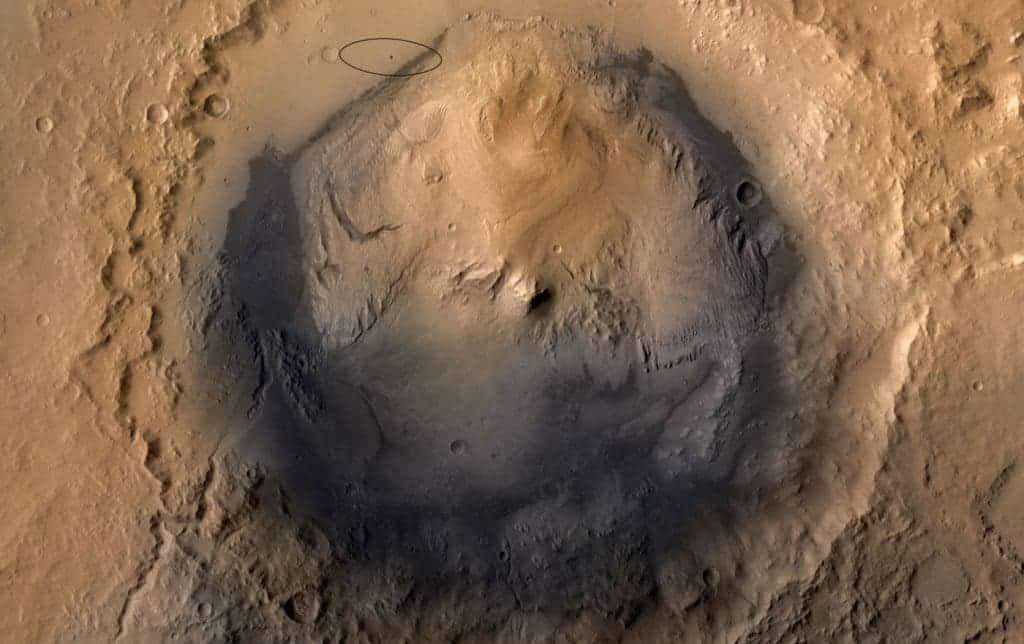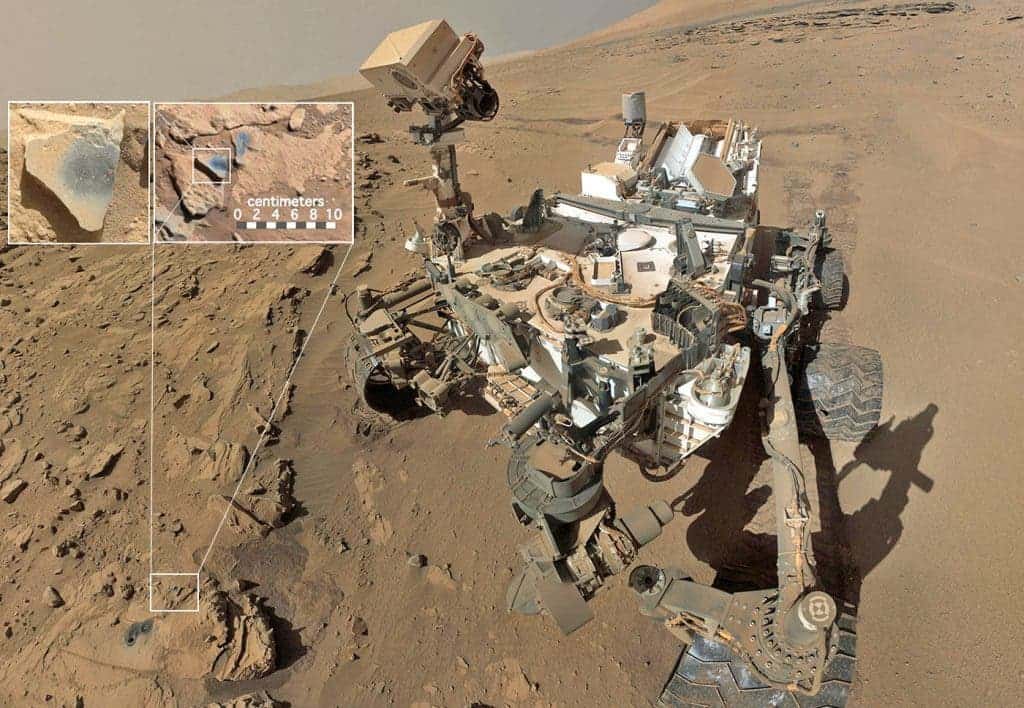Curiosity has discovered high concentrations of manganese oxides on Mars, leading scientists to believe that the planet was once very similar to Earth.
Mars may have once had an Earth-like, oxygen-rich atmosphere enveloping it according to JPL’ Curiosity team. The rover found high concentrations of manganese oxides in the planet’s rocks while blasting through Gale Crater with its laser-firing ChemCam.
On Earth, these compounds first appear at a time when our atmosphere was going through a dramatic change: a microbe-powered oxygen enrichment.
“The only ways on Earth that we know how to make these manganese materials involve atmospheric oxygen or microbes. Now we’re seeing manganese oxides on Mars, and we’re wondering how the heck these could have formed?” says Los Alamos planetary scientists and lead study author Nina Lanza.
Finding these levels of manganese oxide deposits are a dead giveaway for an oxygen rich environment, Lanza adds.
“These high manganese materials can’t form without lots of liquid water and strongly oxidizing conditions. Here on Earth, we had lots of water but no widespread deposits of manganese oxides until after the oxygen levels in our atmosphere rose,” she said.

Curiosity found the samples in Gale Crater (the circled point in the top left.)
Image credits NASA/JPL
But without any bugs living on Mars, how did these rocks form? Lanza believes it comes down to Mars losing its magnetic field.
At one point, the planet had large amounts of liquid water and a protective magnetic bubble, just like our Earth does today. But, while our planet’s atmosphere was pumped full of oxygen by microorganisms, Mars gained its oxygen from water — as its magnetic field became weaker, it could no longer stave off the flow of cosmic ionizing radiation, which broke the liquid down into hydrogen and oxygen atoms.
Much of that oxygen was absorbed by the planet’s now-iconic iron-oxide rocks, gradually giving it the color of rust. Manganese-oxides require much more oxygen to form, however, suggesting that Mars had a lot more of it in its atmosphere than we previously believed.
So just because Mars once had both oxygen and water, that doesn’t mean there was ever life on the planet. Bummer, I know.
“It’s important to note that this idea represents a departure in our understanding for how planetary atmospheres might become oxygenated,” Lanza concludes.
Still, Lanza admits that the theory will be hard to prove. However, it’s the best one we have for now, or until Curiosity stumbles upon a Martian bug. Or a martian.










